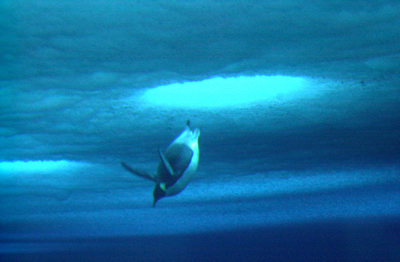
Biological Propulsion
 |
Biological propulsion is incredibly diverse. From microscopic bacteria to majestic eagles, effective means of locomotion through fluids abound. Amid this vast diversity, common themes still emerge. Most notably, propulsion is achieved by accelerating the surrounding fluid in one direction in order to move in the opposite direction, and the energy source used to accelerate the fluid is food or some other stored chemical energy. Stated differently, Newton's Laws of Motion and the Laws of Thermodynamics play just as much a role in biological propulsion as they do in mechanical propulsion. The different approaches used in biology are interesting to study from an engineering perspective for the insight they provide. Likewise, the importance of locomotion to animal survival ("fitness") and ecology gives incentive to study biological propulsion from a biological perspective as well.
Although the diversity of biological propulsion is tremendous, the main modes of propulsion (excluding microscopic organisms) can be broadly categorized into flapping and jetting. Flapping is the preferred mode for fish and birds, whereas jetting is utilized by squid and jellyfish, among others. The following pages will describe the basic operating principles of biological flapping and jetting. Flapping is subdivided into two sections: undulatory swimming and flapping flight.
